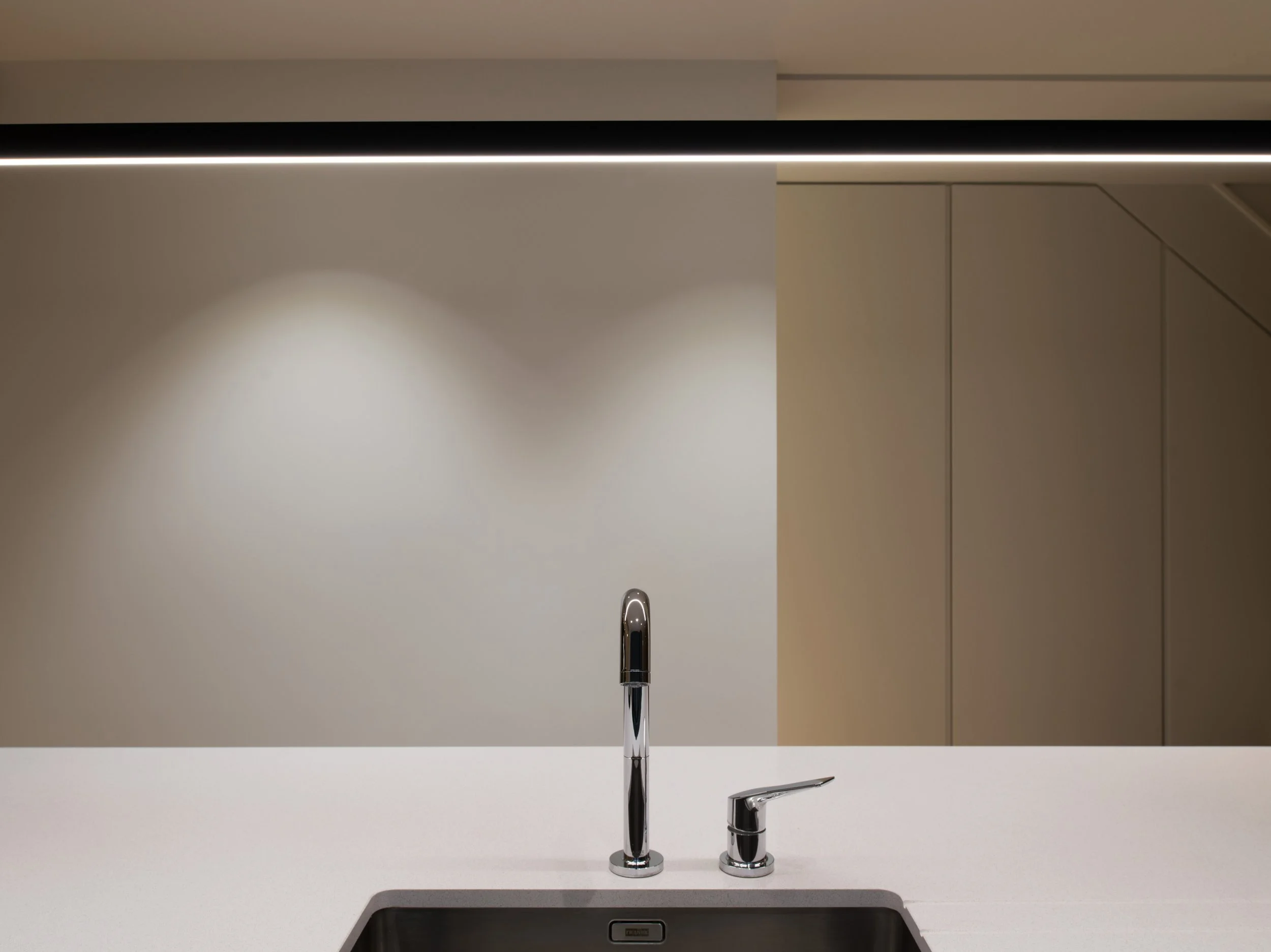How To Use Artificial Light In Your Home
Is darkness the future of artificial light? According to various studies and reports lighting can affect our mood, productivity, sleep patterns, and general wellbeing. Therefore it’s important to carefully consider the type of lighting you choose for the interior of home to ensure your home environment is positively contributing to your health and wellness.
This article outlines what to consider when selecting artificial lighting (for evenings and nights) and how darkness plays an essential role in a healthy, sustainable home.
St Paul Street - General lighting scheme
The evolution of artificial light from candles to OLED.
Light technologies have evolved with the demand for more sophisticated light systems that provide better quality light with less energy. The evolution of artificial light from candlelight has revolutionised our lives in our houses and cities. The benefits of extending and making use of our time during dark hours are undeniable. The tallow candles and crude lamps of the past condensed our waking hours and the inadequate illumination hindered our daily lives.
We now have bright houses and safe streets, but at what cost?
Although modern light fittings such as LED or OLED are widely used, the energy consumption for lights has not decreased, as we are simply using more of it. When Edison invented his first light bulb he believed he’d created a light system that required little human effort or cost but yet we continue to pay for the environmental costs to this day.
“If blue light does have adverse health effects, then environmental concerns, and the quest for energy-efficient lighting, could be at odds with personal health. Those curlicue compact fluorescent light bulbs and LED lights are much more energy-efficient than the old-fashioned incandescent light bulbs we grew up with. But they also tend to produce more blue light.”
- Experts at Harvard Medical School
These are the negative consequences of the excessive and unnecessary use of artificial light:
Bright light during dark hours, mainly blue light from computer screens and telephones, affect our circadian rhythms, with detrimental consequences to our health and productivity.
As energy-efficient light bulbs reduce the cost of artificial light, we tend to abuse it, with a clear effect on our energy bills.
We are getting used to permanent light and bright spaces, so we waste energy and overspend on unnecessary light fittings.
Excessive flat light could tyre the eye rather than help with the task. Knowing the needed lumens for the specific uses makes it possible to specify the proper light fitting without exceeding.
Spaces that are evenly illuminated lack atmosphere and drama, affecting our psychological wellbeing.
Light pollution is now recognised as one of the major environmental challenges that our planet is facing. It is not only about seeing the dark sky at night, but it also affects our ecosystems by disrupting natural behaviours in wildlife.
So, what should you consider when designing the lighting for your house?
Grange Grove - Kitchen task light
Lighting design should go hand in hand with interior design. It is relevant to consider the proportion of the space, the height of the ceilings, the colour, and the material's reflectivity. It is crucial to understand how we use the spaces and always ask ourselves if we need bright light in every corner of the house. The spatial distribution as well as assessing if directional lights are preferable to diffused light is only one aspect.
We can summarise the main types of residential light in three categories:
General lighting gives general consistent background light, and it is often specified as too bright, as it is the safest way to illuminate a space.
Task lighting is the light we need to undertake a task, such as reading or cooking comfortably.
Accent lighting has mainly an aesthetic purpose of highlighting a feature, like a picture on a wall or a part of the space that we feel is more relevant.
A successful illumination is given by the right combination of these three types. It will help with the bills (as you make more efficient use of light), the comfort levels you experience, generate more interesting spaces and help to lift moods. In principle, we want to reduce the general lighting to the minimum and work as much as possible with the task and accent light.
Suppose artificial light is used to supplement daylight. In that case, we should ideally have a colour of temperature around 6,000k (blue light), more similar to the morning light, and it will stimulate melatonin. At the other end of the spectrum, if artificial light is used at night and in the evening, we should lower alertness, and the ideal temperature colour is around 2,700K (red light).
Another important consideration is lighting for limited activities during the sleeping period, minimising bright light's waking stimulus. When we wake up, we are fully dark-adapted and require a low level (less than 10 lux) of luminance. It would be very undesirable if the full lighting system was activated.
Lighting controls are becoming more sophisticated. The dimmer controls allow for manual adjusting of the output of groups of luminaires, helping to create different scenes.
The DALI is standard for Digital Addressable Lighting Interface. A lighting interface system allows lighting to use a digital signal for more precise and flexible controls which users find more versatile and cost-effective. A lighting system that allows for precise control from a central point is more common in large commercial settings. However, DALI is increasingly used for homeowners seeking the best lighting control in residential settings.
As we embrace the darkness as part of life and optimise artificial light only when and where it is needed, our health, soul and eyes, the planet, and wallet will benefit from it.
If you are thinking of starting a project and feel that what we mentioned in this article might be relevant to you, contact us, we will be happy to help.


